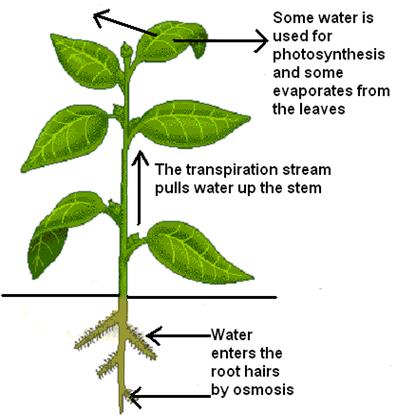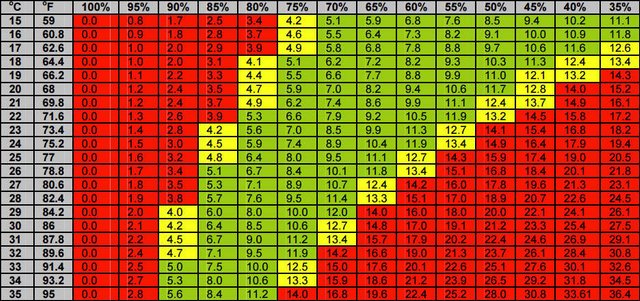Learning about Vapor Pressure Deficit (VPD) in indoor gardening- Humidity is important!
Hi everyone, just wanted to share with you some of my understanding on vapor pressure defcit, or VPD. You might know from some of my previous posts that I am building and working in a new indoor grow space, and with that comes a fair amount of learning while trying to adjust and control an unfamiliar environment.
The major issue that I have been having with lately is controlling the humidity in the space. As you can see from some of the pictures, my peppers have been growing steadily, but appear to be stressed, and have been for some time.
These Chinese 5 color peppers are the most hearty of the bunch, and resilient to temperature, humidity and various levels of fertilizer. You can still see some stress in the leaves though, in the space between the veins there is a slight "bunching" or crimping.
These Peruvian Aji Charapita peppers however have been struggling since transplanting them in the new space. They are still drinking water and using nutrients, but you can definitely notice more the effects of having a slightly arid environment. They are obviously more sensitive to environment and nutrients that I feed them.
Relative humidity has averaged around 47% in the space, with lows of 33% and highs of 65%. In order to correct the problem, I am doing a few things:
- Adding a DIY humidifier to help evaporate moisture into the air. I also have several propagation trays filled with water in the room to evaporate passively.
- Trying to keep the temperature in the low 70s where plants slow their metabolism of nutrients. You can see by the 😐 face on my thermometer, that conditions are not ideal.
- Cutting back on the amount of nutrients that I give to the plants, which is tough however for me because they are receiving their nutrients right now from the soil that I used to transplant, which is heavily amended. The root of the problem essentially is that the plants are over feeding because they are transpiring too much water from their leaves to make up for the imbalance or "vapor pressure" difference between the humidity within the plant and the outside environment. Here is a diagram showing how plants uptake nutrients and release water back into the environment through tiny pores in their leaves called stomata. The pull from excess transpiration causes nutrients to be absorbed more rapidly, which causes stress on the plant.

Below is a general guideline for blooming or flowering plants like tomatoes and peppers. Our average temperature in the space has been around 73 F, and with a RH of 47%, our VPD calculates between 14 and 15, which is just outside of the optimal range. This is why our plants are still growing, however the stress is causing pretty slow growth, and curling of the leaves caused by too many nutrients.

It's never fun to have stressed out plants, but its part of learning to find the root problem and working out solutions. That's how we grow in our understanding and improve with our gardens=)
Hope you enjoyed the post=) If you want to find out more about us check out our store website greendragonhydroponics.com or facebook page
Thanks for upvoting and following!
Hey, thanks for sharing this knowledge with us! Every advise is important in gardening!
I like your all content because your content type and quality is so good.